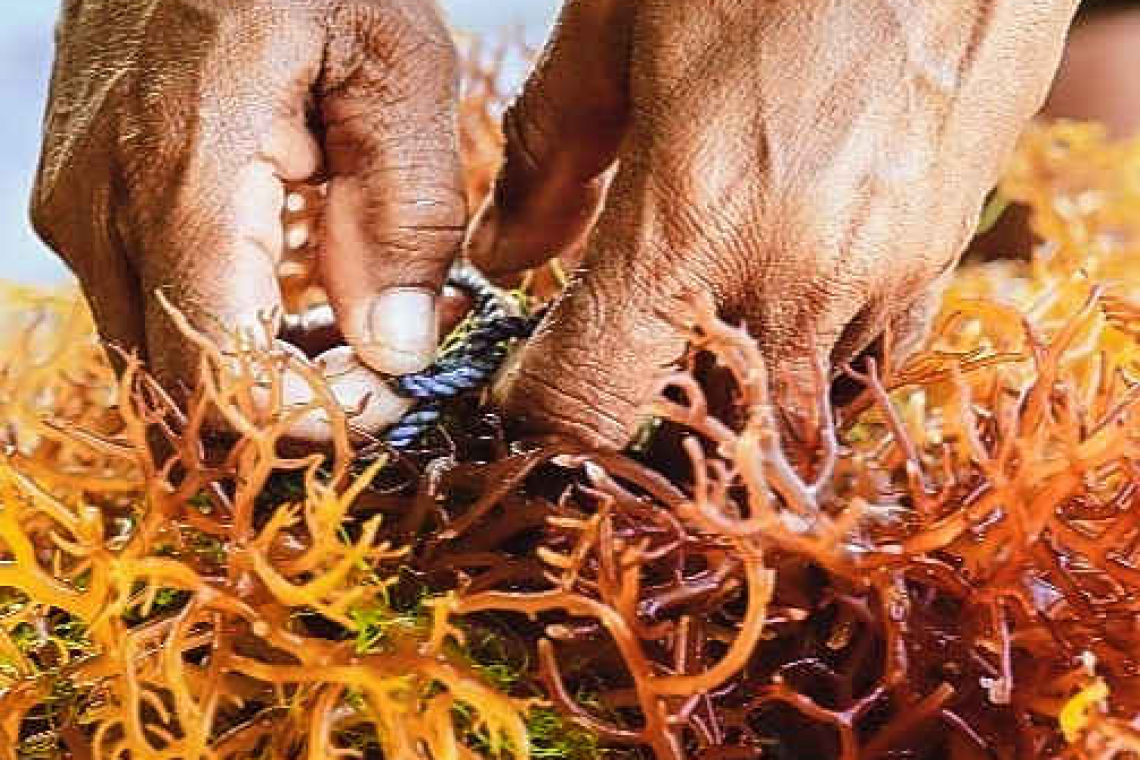By Dr. Colin Michie FRCPCH University of Central Lancashire.
Sea moss smoothies are gentle, balmy, often with soft flavours. In Trinidad, it is “good for de back”. But what exactly is sea moss? Is this seafood really beneficial?
Sea moss is also called Irish or pearl moss. Its Gaelic name is “carraigin”, or little rock. It grows on rugged shorelines on both sides of the Atlantic, looking rather like a small fern. It is not related to land mosses. As a source of vegetable gelatine, sea moss has for centuries been used in kitchens, from Ireland to the Philippines, in making sauces, jellies, aspics and drinks. Traditional flavours include vanilla, cocoa, honey, coconut and lemon juice. (No sugar or alcohol needed!)
Seaweeds are large algae that have evolved over much longer times than most land plants. Their diversity of shape, colour and design allows them to withstand changes in sea temperatures while fixing carbon from the atmosphere and producing most of our oxygen. They provide food and shelter to trillions of sea creatures.
Mankind has used seaweeds as food, fertiliser and animal feeds, as well as for building. Uses and values of these marine treasures in our daily lives and medical care are growing. Sea moss, a sea vegetable, is a red seaweed harvested for its carrageenan, agar, alginates and ulvan. These are carbohydrate molecules built in long chains.
Carrageenan gum binds water into a gel and is used in foods to keep them hydrated and juicy. The gum is antimicrobial and antioxidant too: These build new levels of safety into foods prepared this way. Seaweed products in trays and packaging films are biodegradable and environmentally friendly. By replacing bioplastics made from corn or vegetable oils, seaweed products take the pressure off land-based crops.
Seaweed hydrogels are used in the preparation of cottage cheeses, sausages, patties, yoghurts, ice creams, frozen fruit and nut milks. Their gelling, emulsifying and improved “mouth feel” make them ideal for the table. Using seaweeds in this way does not make them “ultra-processed”, but rather prepared in a more sustainable fashion with less environmental impact and longer shelf-lives. Carrageenan is designated E407 as a food additive. It is employed in the manufacture of toothpastes (it may promote gum health) or shampoos, where its antimicrobial effects are beneficial. It is used to stabilise and create ideal textures for cosmetics, shoe polishes and fire-fighting foams.
In hospitals, seaweed polysaccharides deliver wound-healing dressings and improved drug delivery. They are used in eye drops, promoting lubrication and slow release of medications onto the cornea. Some seaweeds contain anti-inflammatory compounds or anti-cancer agents: These are being tested. Many have yet to be examined for potential botanical bounties.
Seaweed diets have been linked with poverty in many countries. Whether it was sea mosses collected in Iceland, cochayuyo in pre-Colombian Chile, or dulse in Ireland, similar attitudes have hampered their popularity. This is not the case in Japan, where harvesting seaweed is part of an ancient Shinto ritual. Nori, wakame, umi budo, kombu and hijiki are eaten daily there in large amounts, associated with refined cuisine rather than starvation! Gulaman, a carrageenan is a dietary staple in the Philippines and other Pacific nations.
Edible seaweeds contain little protein and fat; their proteins contain all the essential amino acids. Seaweeds have high mineral contents, including valuable iron; they contain carotenoids and polyunsaturated fats – in particular, omega-3 fatty acids. An algal oil has been developed that may be taken as a supplement instead of fish oils – after all, fish oils have their origins from the seaweeds they eat! Seaweed fibre is beneficial for gut movement and as a prebiotic supporting gut bacteria.
Large studies are needed to find out how much sea vegetable we should consume. Their unique characteristic includes their collection of iodine and bromine from sea waters. These elements are difficult to obtain from foods grown inland and are required in our diet. Brown algae, such as the kelps, have particularly high levels of iodine. So whereas regular small amounts of seaweed are definitely healthy, it is unwise to consume large amounts of brown seaweeds, as too much iodine (just as too little) may damage thyroid functions.
Seaweeds filter out heavy metals from the marine environment too, and these plants have been used in the decontamination of some mining sites. Concerns about the levels of arsenic, in particular, have led to the analysis of seaweed and the meat from animals fed on seaweeds. This metal has not been found above safety levels in the human food-chain. However, local monitoring is needed. A recent study found arsenic in Sargassum weed and small shellfish on the beaches of Martinique.
Sea moss is growing as a tasty climate-friendly beverage with positive health effects. We can even source our moss locally from St. Lucia. We should probably all drink more of it!
Dr. Colin Michie is currently the Associate Dean for Research and Knowledge Exchange at the School of Medicine in the University of Central Lancashire. He specializes in paediatrics, nutrition, and immunology. Michie has worked in the UK, southern Africa and Gaza as a paediatrician and educator and was the associate Academic Dean for the American University of the Caribbean Medical School in Sint Maarten a few years ago.







